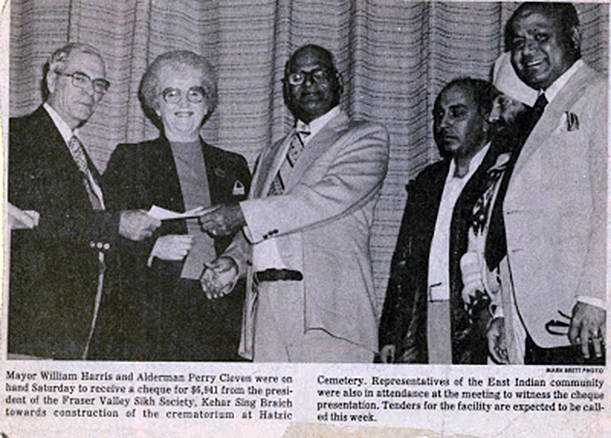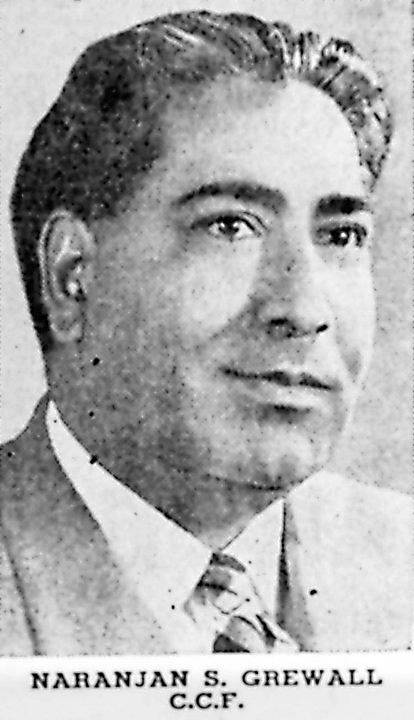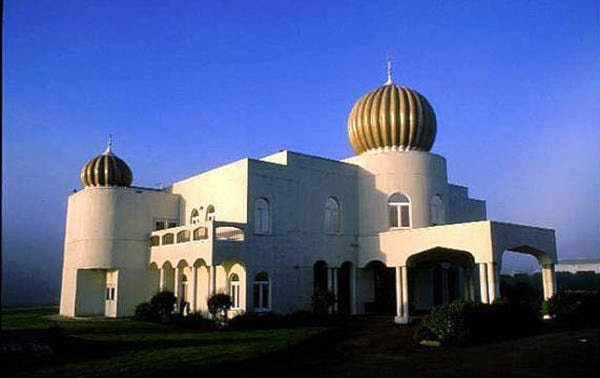By Ken Herar
Columnist
As our community prepares to celebrate its 125th anniversary, I would like to highlight several projects by the South Asian (Sikh) community that have served the entire community with distinction. Three clearly come to mind as treasured landmarks, but controversy wasn’t far away. It was the three Ps – partnerships, philanthropy and perseverance – that prevailed.
Naranjan Grewall was the former commissioner and mayor of Mission City in 1954 and the first person of Indian origin to be nominated to a political party as a CCF candidate in 1956 and the first Hindu, as it was phrased at that time, to be elected in Canada in 1950.
During the much-heated 1956 provincial election, Grewall, as a CCF candidate, commonly addressed the issues of taxes, bridges, farmers and the forestry industry, which he claimed were being “monopolized” by a handful of large companies in the province.
Grewall referred to these stakeholders as “timber maharajahs” and said the system would revert to a “form of feudalism” which he had left 30 years prior.
He spoke passionately before the provincial cabinet and testified at the Sloan Commission on behalf of small logging operators in B.C. Forest Minister Robert Sommers was also under investigation for bribery charges and the province was getting rocked in a major scandal.
Grewall, through his tireless efforts, was instrumental in getting the Tree Farm Licence #26 to the District of Mission in 1958. It was the only municipality to be given this opportunity and to be able to monitor their own resources in the province.
The incident between former B.C. premier WAC Bennett and Grewall on the stage at the Mission Legion in September 1956 demonstrated how fierce political battles were fought in B.C. It might have been one of the deciding factors of granting the tree farm licence and was probably one of most memorable moments in B.C. political history
The District of Mission has managed this resource since 1958 and it is often cited as an excellent example of how a locally managed forest can provide benefits to the community. Since 1990, surplus revenues have provided approximately $5 million or more to capital projects.
When Dave Barrett became premier in 1972, he was invited to the Sikh Temple in Vancouver and was presented with a ceremonial sword.
As he received the sword, he told the audience: “This isn’t for me, this is for Naranjan Grewall. He is our true hero.
“The former mayor knew the risk he was taking and many people were surprised he took this risk to enter the race,” said Barrett.
“Every kid in the North Fraser who thinks he or she is being discriminated against should read the Grewall story and the challenges he faced.”
Grewall was later found dead in a Seattle motel room with a gunshot wound to the head in July 1957. He was 47 years of age.
* * * *
The Mission Crematorium at Hatzic Cemetery was a controversial project for the district. The young growing South Asian community didn’t have a facility to take their deceased in the Fraser Valley and most families were using facilities in the Vancouver area, which was becoming stressful. A campaign was started to build a site in the late 1970s. It later opened in 1982 and there was opposition to the project from folks who didn’t hold cremation has part of their religious beliefs.
It is a Sikh tradition for mourners to gather at the cremation site for final prayers for departed souls. The crematorium has been largely used by members of the Abbotsford/Mission Indo-Canadian community, but the doors have always remained open to the general public. The late Mission alderman Perry Cleven, who served from 1974 to 1986, said, “It was a very interesting time and it was something completely new. If it wasn’t for the Indo-Canadian community, the crematorium wouldn’t have been built.”
According to my father, Tok Herar, who headed the fundraising committee, “The crematorium was built at the appropriate time and has served the region well despite some of the challenges we faced at that time. Over the years, funds have been raised by the Punjabi community to upgrade the facility. A much-needed roof to protect mourners from weather and a larger waiting area were added in recent years.”
* * * *
Controversy over the zoning for and the construction of Mission Sikh Temple created great consternation in the community in the 1980s.
But the publishing of an eight-page colour newspaper supplement on the temple helped ease some of the tension.
Reporter Karen Laing and editor Rick Rake tell a compelling story about producing the Fraser Valley Record (now the Mission Record) supplement, which served as a tool to educate the community about the Sikh religion and significance of the British-India style temple.
As Rake and Laing know, fear is always an issue when communities deal with cultural changes.
With the support of photographer Dr. Noel Hall, Rake and Laing said they worked with members of the Braich family to create the supplement. The family would invite The Record staff at 3 a.m. to the Chinese restaurant a few doors down to take a break as they tackled the many stories and did the layout.
Rake said almost 50 companies – about three-quarters of them from the Fraser Valley – were involved in the construction of the $2.8 million temple.
Teck Construction Ltd. of Langley was the general contractor. Architect was Norman B. Davis, and project manager was Mike Meeker of Mission. His wife, Barb, assisted in the temple’s design, said Laing. During the ground-breaking for the temple on Dec. 4, 1988, Dewdney MLA Norm Jacobsen asked Rake if he knew any words in Punjabi to say to the Panj Piyare, decked out in their swords and dressed in their traditional orange garb.
Rake responded: “Sat Sri Akal means hello.” When Jacobsen repeated the words on that rainy day for the 1,500 people in attendance, the response was overwhelmingly positive.
As Laing reported in the supplement published on Nov. 22, 1989, “For many members of the Mission Sikh community, witnessing the dedication gave them for the first time a sense of belonging. In the Sikh religion, a temple is far more than a place of worship … it’s a cultural centre.”
Diversity in Mission is a beautiful thing, said Laing. “Why not embrace it?”


